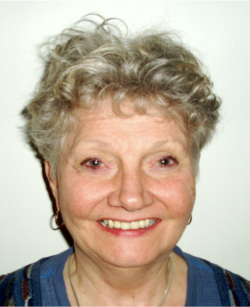 Education
Education
Linda was born in Oklahoma on November 25, 1948. When her parents finished university they returned to Texas and she grew up in Texas with her early years spent in oil camp housing. She graduated from the University of Texas (UT) in 1970 in French and Biology and at first taught high school biology. She took courses at UT under Harold Bold and Mike Wynne and developed an early interest in algae. In 1973 she went to Hawaii for her summer teaching vacation and registered for summer school to be able to stay in the cheap dormitory room and board for two months. Instead of registering for Hula lessons as her friends did, she registered for a course entitled “Plants of the Sea”. Frank Round was the visiting professor and with the first SEM picture he showed of a diatom, she was hooked! She returned to Texas, working one more year as a teacher and then returned to graduate school to study diatoms. She was the first graduate student of Greta Fryxell who had just finished her PhD at 50, another high school teacher who had returned to graduate school. Linda obtained her Ph.D. in Marine Botany from Texas A&M University in 1983
Honors
Tyge Christensen award for best paper in Phycologia in 2000, 2001 and 2006; Provasoli award for best paper in Journal of Phycology, 2009. Elected foreign member of Norwegian Academy of Science for her pioneering work in phytoplankton phylogenetics. Two diatom genera (Medlinia and Medlinella) and several species named after her. Honorary member of the International Society for the Study of Harmful Algae (ISSHA), Nantes, 2018.
Professional Career
Linda married Richard Crawford in 1983 but the University of Bristol would not hire another person working on diatoms. When NERC offered a program to retrain marine biologists in molecular techniques, she obtained a grant to work in Mitch Sogin’s lab in Denver, Colorado. There she learned sequencing and basic molecular biology and with Mitch Sogin, they produced the first primers to amplify ribosomal genes using PCR. She went on to learn phylogenetic analyses. This retraining had meant challenges to them as a couple but these were sorted when they moved to the Alfred Wegener Institute. Her husband became the new curator of the Hustedt Diatom Collection and Linda became the first molecular biologist to work at the AWI. Her expertise focused on marine phytoplankton, having taken the UNESCO course for phytoplankton identification and their evolution/phylogenetics. Other professional destinations after leaving AWI included: Associate Research Fellow of the Observatoire Oceanologique Océanologique de Banyuls-sur-Mer of the University of Paris Marie Curie, France; Head of Research at Microbia Environnement, France; Associate Research Fellow, Marine Biological Association of the U.K. She has two children, one of whom is a university lecturer in psychology and the other a dress designer/architect so she set a good role model for them to juggle both career and family. Linda is extremely curious and fond of linking information from one area to another. Her taxonomic training provided her with the background for interpretation of the new molecular phylogenies she produced. She has published papers describing one new phylum, three new classes, several genera and a few species. Many of these papers have provided revision of the systematics of the various algal groups she has worked with. Linda has published over 260 papers, 37 book chapters, three edited books and one manual for microarray analysis. Linda’s research career is testament to her determination - she has been awarded 56 research grants, of which 19 were from the EU.
Key HAB Contributions
Her benchmark publication in Gene 71, 1988, for first PCR primers for the 18S gene with over 3000 citations opened the door for rRNA genes as biodiversity genes. A key area of focus for over 20 years has been the development of phylochips/microarrays/biosensors as early warning systems for toxic algae and freshwater pathogens and for analyzing marine biodiversity. The probes for recognizing toxic algae originate from her phylogenetic papers
Linda applied her vast knowledge and skills of molecular biology to fundamental and applied research and monitoring of harmful algae, including rRNA probes and general methods for molecular assessment of biodiversity. Both microarrays with fluorescent detection and biosensors with electrochemical detection have been applied to the detection of toxic algae and patented but as yet not commercially exploited. She used LSU sequences to apply a molecular clock to suggest a scenario for the origin and radiation of Alexandrium tamarense species complex in geological time.
Mentored
Master students: Martina Koop, Susanne Juljic, Marco Berzano, Sonja Diercks, Ines Jung, Katarzyna Wojcieowska, Robert Niestroy, Francesca Werneulen, Lars Kremer.
Ph.D. Supervisor of: Gary Barker, Martin Lange, Aud Larsen, Kerstin Töebe, Uwe John, Bank Beszteri, Katrin Hamann, Marco Berzano, Christine Gescher, Sonja Diercks, Shinya Sato, Steffi Gaebler, Ramkumar Seenivasan, Niko Hoch, Angelica Herrera
10 Key HAB Publications
- Engesmo A, Strand D., Gran-Stadniczeñko S., Edvardsen B., Medlin L.K. & Eikrem W. 2018. Development of a qPCR assay to detect and quantify ichthyotoxic flagellates along the Norwegian coast, and the first Norwegian record of Fibrocapsa japonica (Raphidophyceae). Harmful Algae 75: 105-117.
- Medlin L.K. 2018. Cyano RT: a novel tool for measuring gene expression in cyanobacteria. Journal of Environmental Microbiology 1: 17-27.
- Medlin L.K. & Orozco J. 2017. Molecular Techniques for the Detection of Organisms in Aquatic Environments, with Emphasis on Harmful Algal Bloom Species. Sensors 17, 1184.
- Van Der Waal D., Guillebault D., Alfonso A., Rodríguez I., Botana L. & Medlin L.K. 2018. µAqua microarrays for phylogenetic and toxin expression of Cyanobacteria with validation by cell counts and UPLC/MS-MS. Harmful Algae 72: 25-35.
- Orozco J., Villa E., Manes C-L., Medlin L.K. & Guillebault D. 2016. Electrochemical RNA genosensors for toxic algal species: enhancing selectivity and sensitivity. Talanta161: 560-566.
- Dittami S.M., Pazos Y. & Medlin L.K. Microarray testing for the presence of toxic algae Monitoring Programme in Galicia. Environmental Science and Pollution Research International 20: 6778-6793.
- Edvardsen B., Dittami S.M., Groben R., Brubak S., Escalera L., Rodríguez F., Reguera B., Chen, J. & Medlin L.K. 2013 Molecular probes and microarrays for the detection of toxic algae in the genera Dinophysis and Phalacroma (Dinophyta). Environmental Science and Pollution Research International 20: 6733-6750.
- Diercks S., Metfies K., Jäckel S. & Medlin L.K. 2011. The ALGADEC devise: Development and optimisation of a semi-automated rRNA biosensor for the detection of toxic algae. Harmful Algae 10: 395-401.
- John U., Medlin L.K. & Groben R. 2005. Development of specific rRNA probes to distinguish between geographic clades of the Alexandrium tamarense species complex. Journal of Plankton Research 27: 199-204.
- John U, Fensome R.A. & Medlin L.K. The application of a molecular clock based on molecular sequences and the fossil record to explain the biogeographic distribution within the Alexandrium tamarense “species complex”. Molecular Biology and Evolution 20:1015-1027
--
Prepared by Jane Lewis and Beatriz Reguera

